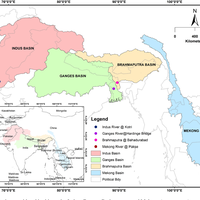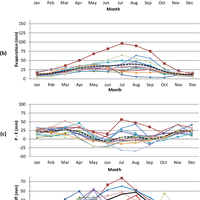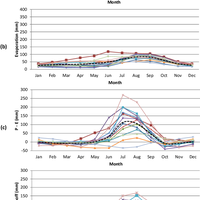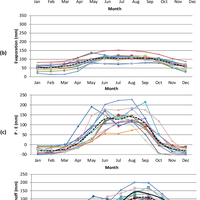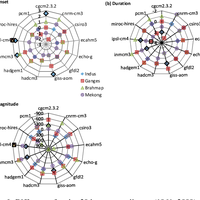Abstract
In this study, we investigate how PCMDI/CMIP3 general circulation models (GCMs) represent the seasonal properties of the hydrological cycle in four major South and Southeast Asian river basins (Indus, Ganges, Brahmaputra and Mekong). First, we examine the skill of the GCMs by analysing their performance in simulating the 20th century climate (1961-2000 period) using historical forcing (20c3m experiment), and then we analyse the projected changes for the corresponding 21st and 22nd century climates under the SRESA1B scenario. The CMIP3 GCMs show a varying degree of skill in simulating the basic characteristics of the monsoonal precipitation regimes of the Ganges, Brahmaputra and Mekong basins, while the representation of the hydrological cycle over the Indus Basin is poor in most cases, with a few GCMs not capturing the monsoonal signal at all. While the model outputs feature a remarkable spread for the monsoonal precipitation, a satisfactory representation of the western mid-latitude precipitation regime is instead observed. Similarly, most of the models exhibit a satisfactory agreement for the basin-integrated runoff in winter and spring, while their spread is large for the runoff during the monsoon season. For the future climate scenarios, most models foresee a decrease in the winter P - E over all four basins, while agreement is found on the decrease of the spring P - E over the Indus and Ganges basins only. Such decreases in P - E are mainly due to the decrease in precipitation associated with the western mid-latitude disturbances. Consequently, for the Indus and Ganges basins, the runoff drops during the spring season while it rises during the winter season. Such changes indicate a shift from rather glacial and nival to more pluvial runoff regimes, particularly for the Indus Basin. Furthermore, the rise in the projected runoff, along with the increase in precipitation during summer and autumn, indicates an intensification of the summer monsoon regime for all study basins. ©Author(s) 2014.
Figures
Register to see more suggestions
Mendeley helps you to discover research relevant for your work.
Cite
CITATION STYLE
Hasson, S., Lucarini, V., Pascale, S., & Böhner, J. (2014). Seasonality of the hydrological cycle in major South and Southeast Asian river basins as simulated by PCMDI/CMIP3 experiments. Earth System Dynamics, 5(1), 67–87. https://doi.org/10.5194/esd-5-67-2014


